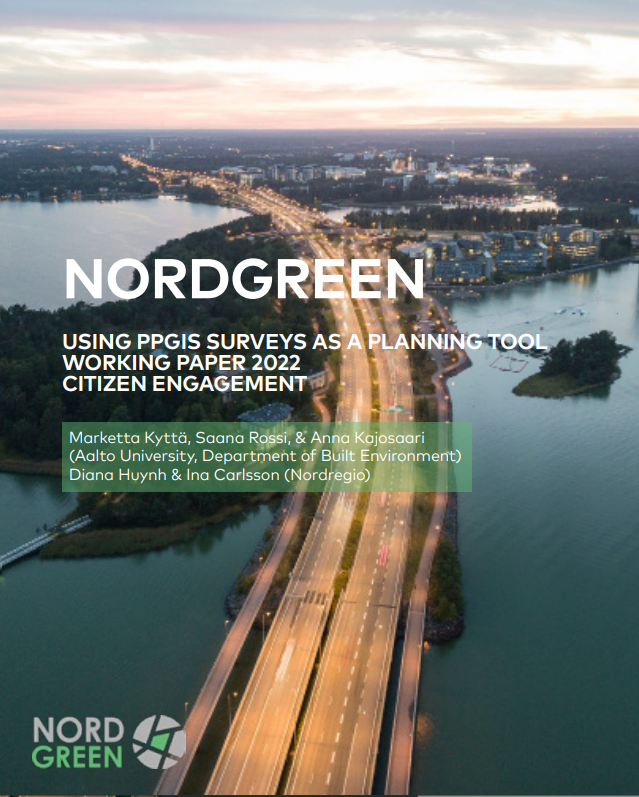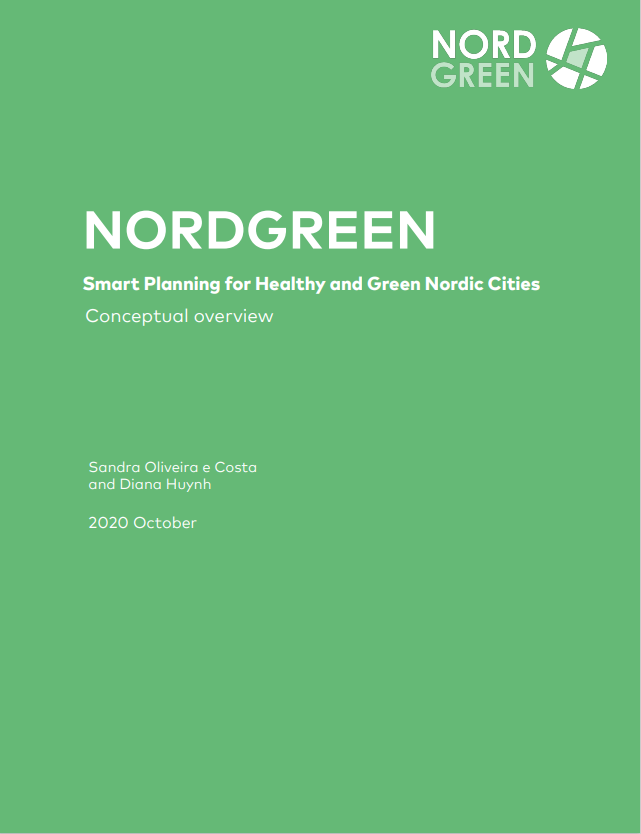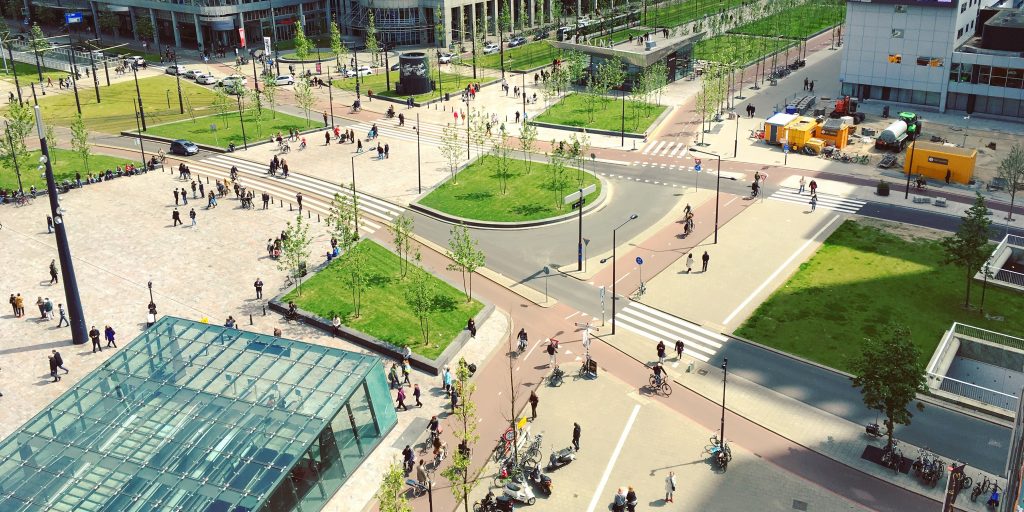
NORDGREEN Publications
Finalised reports, scientific articles and shorter summaries are available here as soon as they are published.
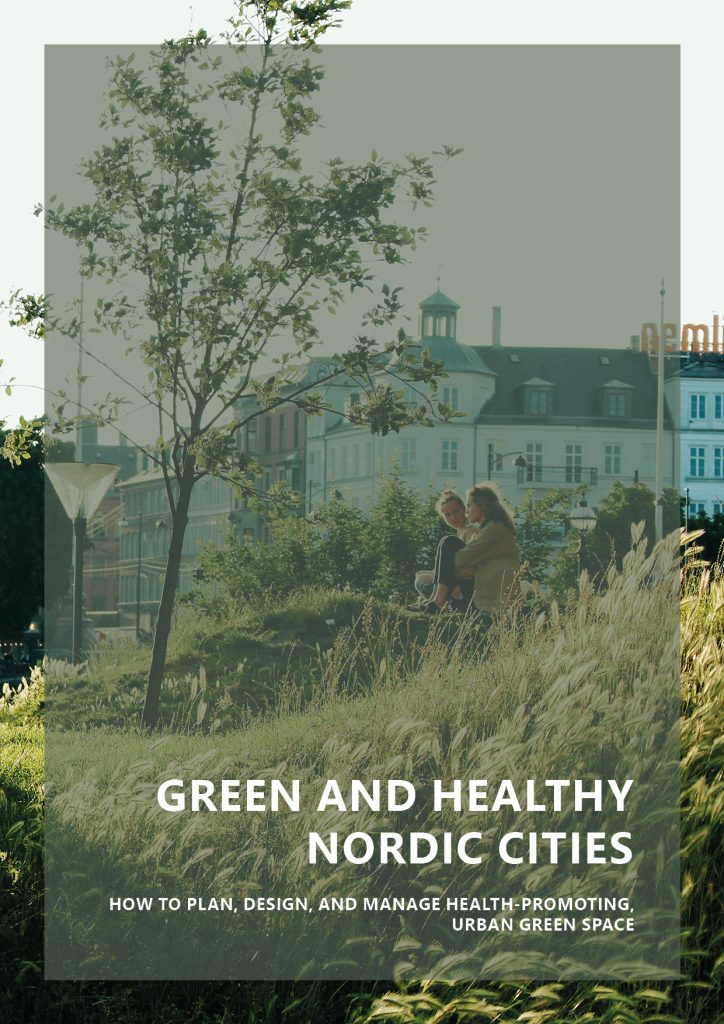
Green and healthy Nordic cities: How to plan, design, and manage health-promoting urban green space
This handbook is the culmination of the NORDGREEN project. It uses an innovative framework based on the multi-disciplinary approach of the project, using epidemiological studies, environmental psychology, policy and management, and citizen participation.
These fields of study and their respective methodologies are divided into the four so-called NORD components—NUMBERING, OBSERVING, REGULATING, and DESIGNING—which, accompanied by a BACKGROUND section reviewing the evidence linking green space and human health, form the bulk of the handbook.
Based on the research and lessons learned from the six case study cities, the handbook provides practitioners with a TOOLBOX of adaptable methods, models, and guidelines for delivering health-promoting green spaces to consider in their own contexts.
By reading this handbook, planners and policymakers can expect to gain (1) a background on the evidence linking green spaces and health, practical tools for planning, designing, and managing green spaces, (2) tips from researchers regarding the challenges of using various methods, models, and guidelines for delivering health-promoting green space, and (3) inspiration on some success stories emerging from the Nordic Region in this area of study.
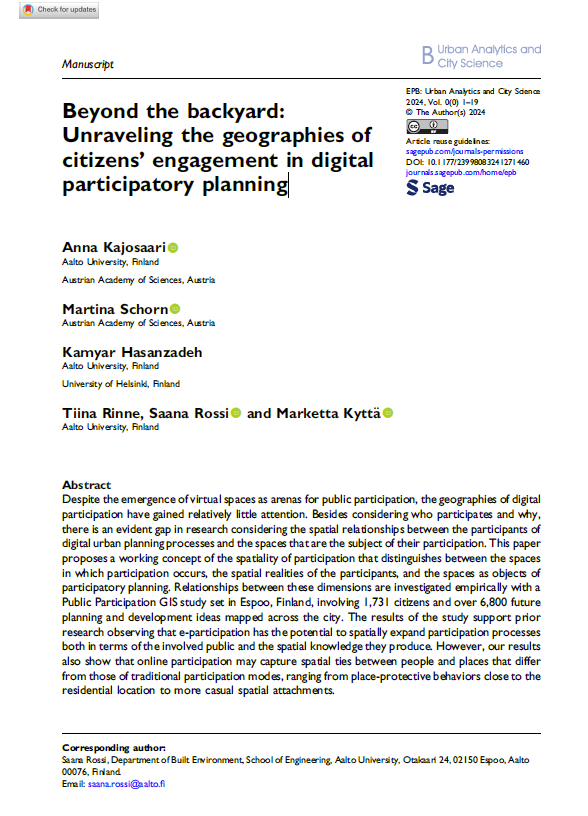
Beyond the backyard: Unraveling the geographies of citizens’ engagement in digital participatory planning
Despite the emergence of virtual spaces as arenas for public participation, the geographies of digital participation have gained relatively little attention. Besides considering who participates and why, there is an evident gap in research considering the spatial relationships between the participants of digital urban planning processes and the spaces that are the subject of their participation.
This paper proposes a working concept of the spatiality of participation that distinguishes between the spaces in which participation occurs, the spatial realities of the participants, and the spaces as objects of participatory planning.
Scientific article, August 2024
Read the article here
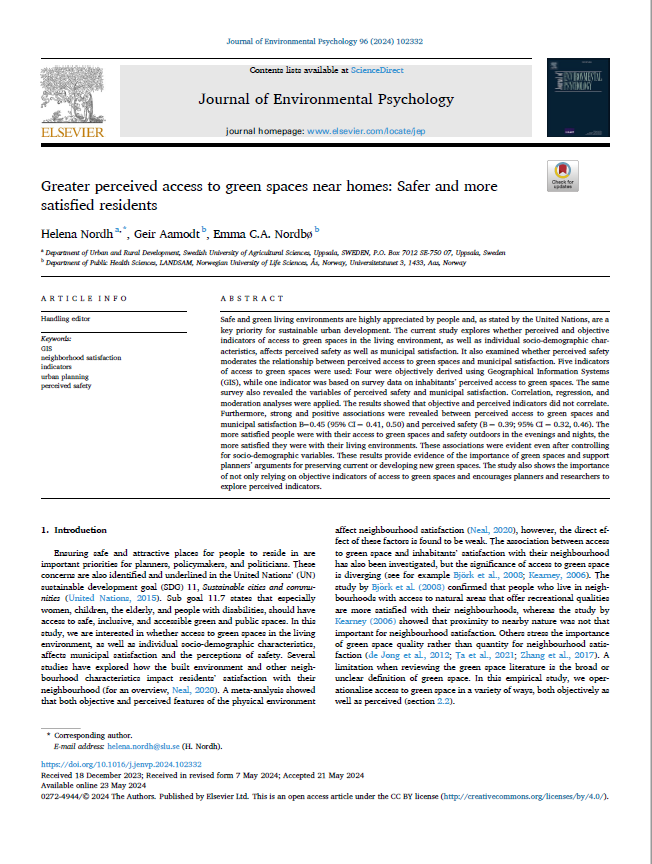
Greater perceived access to green spaces near homes: Safer and more satisfied residents
Safe and green living environments are highly appreciated by people and, as stated by the United Nations, are a key priority for sustainable urban development.
The current study explores whether perceived and objective indicators of access to green spaces in the living environment, as well as individual socio-demographic characteristics, affects perceived safety as well as municipal satisfaction. It also examined whether perceived safety moderates the relationship between perceived access to green spaces and municipal satisfaction.
Scientific article, June 2024
Read the article here
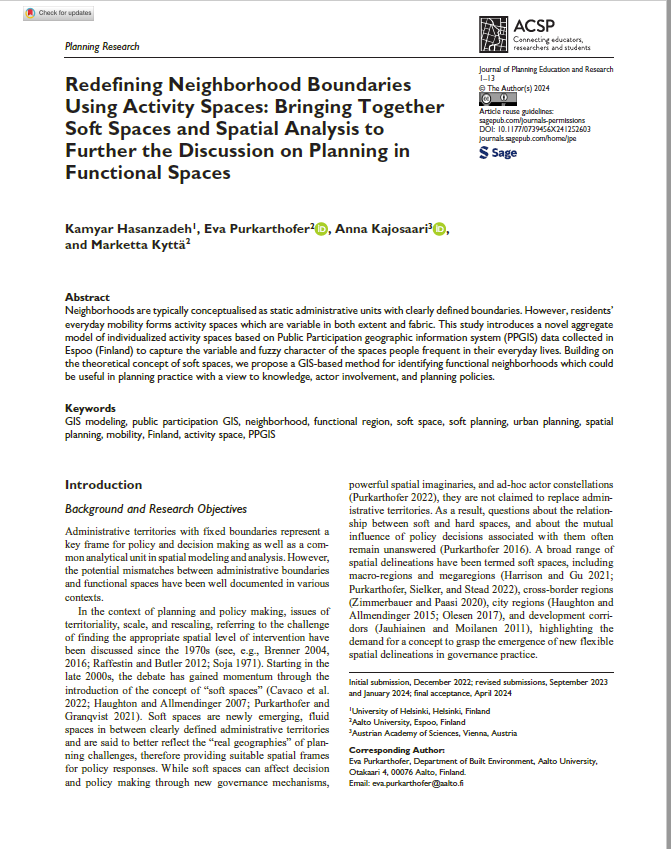
Redefining Neighborhood Boundaries Using Activity Spaces: Bringing Together Soft Spaces and Spatial Analysis to Further the Discussion on Planning in Functional Spaces
Neighborhoods are typically conceptualised as static administrative units with clearly defined boundaries. However, residents’ everyday mobility forms activity spaces which are variable in both extent and fabric.
This study introduces a novel aggregate model of individualized activity spaces based on Public Participation geographic information system (PPGIS) data collected in Espoo (Finland) to capture the variable and fuzzy character of the spaces people frequent in their everyday lives.
Building on the theoretical concept of soft spaces, we propose a GIS-based method for identifying functional neighborhoods which could be useful in planning practice with a view to knowledge, actor involvement, and planning policies.
Scientific article, May 2024
Read the article here
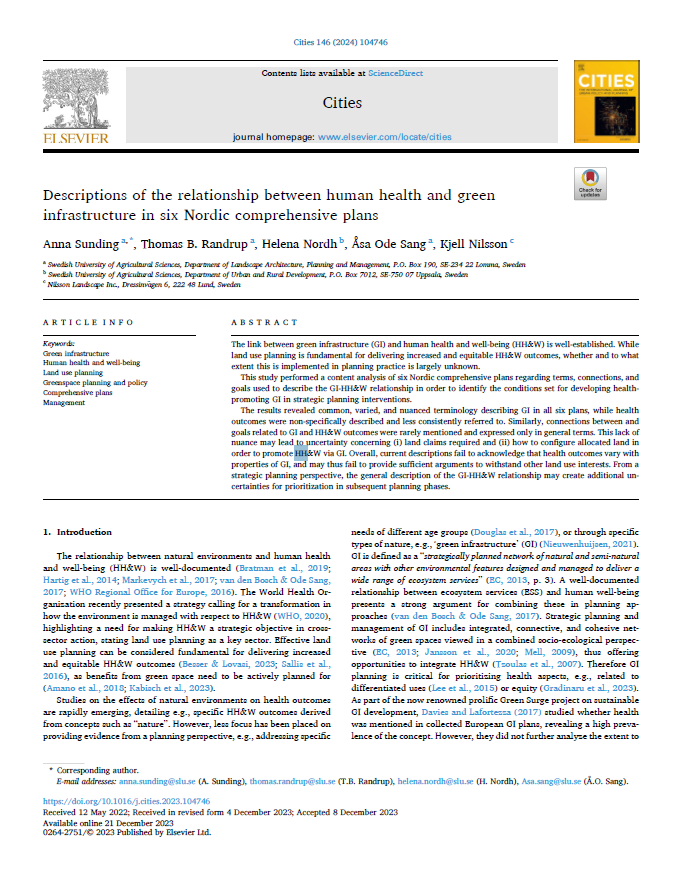
Descriptions of the relationship between human health and green infrastructure in six Nordic comprehensive plans
The link between green infrastructure (GI) and human health and well-being (HH&W) is well-established. While land use planning is fundamental for delivering increased and equitable HH&W outcomes, whether and to what extent this is implemented in planning practice is largely unknown.
This study performed a content analysis of six Nordic comprehensive plans regarding terms, connections, and goals used to describe the GI-HH&W relationship in order to identify the conditions set for developing health-promoting GI in strategic planning interventions
Scientific article, March 2024
Read the article here

Pathways for Cleaner, Greener, Healthier Cities: What Is the Role of Urban Agriculture in the Circular Economy of Two Nordic Cities?
As major hubs for energy and resource consumption and carbon emissions, cities are at the forefront of the discussion on the impacts of megatrends, such as demographic changes, technological advancements, and the shift toward climate neutrality.
Despite growing literature suggesting pathways for cities to cope with these challenges, the intersection between circular economy and urban agriculture for sustainable urban development has been little explored, especially concerning practical applications.
To bridge this gap, this study aimed to explore the role of urban agriculture in promoting the circularity of resources at the city level in Aarhus, Denmark, and Ås, Norway.
Scientific article, Feburary 2024
Read the article here

Predicting context-sensitive urban green space quality to support urban green infrastructure planning
Urban green spaces (UGSs) support human health and well-being in diverse ways. In addition to their availability and accessibility, also the quality of UGSs is relevant for understanding human-environment interactions between urban populations and their local UGS. However, data on UGS quality are rarely available with the geographic coverage required for spatial decision making and urban green infrastructure (UGI) planning and management.
This study uses data from a large-scale public participation GIS (PPGIS) survey to predict perceived UGS quality across the city of Espoo, Finland.
Scientific article, February 2024

Health-Promoting Nature-Based Paradigms in Urban Planning
This entry describes three overarching paradigm shifts in urban planning, from the end of the 18th century to today, and the focus is on the major paradigm shift that is underway: how green areas can mitigate climate effects, increase biodiversity and at the same time support people’s health and living conditions in a smart city.
Scientific article, October 2023
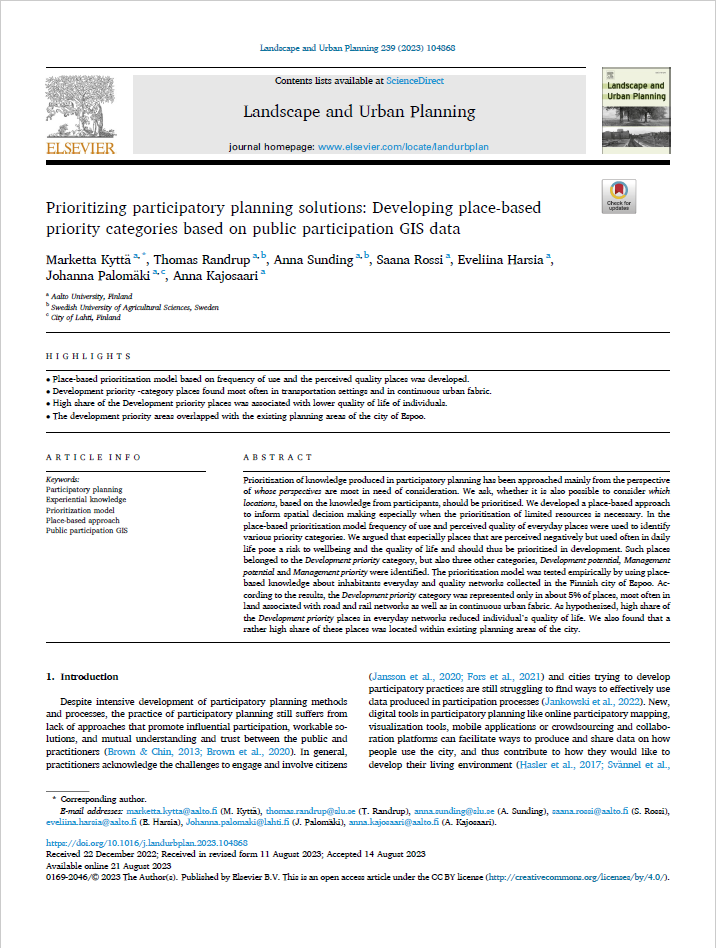
Prioritizing participatory planning solutions: Developing place-based priority categories based on public participation GIS data
Prioritization of knowledge produced in participatory planning as been approached mainly from the perspective
of whose perspectives are most in need of consideration. We ask, whether it is also possible to consider which
locations, based on the knowledge from participants, should be prioritized. We developed a place-based approach
to inform spatial decision making especially when the prioritization of limited resources is necessary.
Scientific article, April 2023

Relationships between socio-demographic / socio-economic characteristics and neighborhood green space in four Nordic municipalities – results from NORDGREEN
Urban green space governs important ecosystem services including providing health promoting facilities. However, unequal distribution of green space among socio-demographic and socio-economic groups may create environmental injustice among inhabitants and between neighborhoods. This paper reports on access to different types of green space for residents in four Nordic cities.
Scientific article, April 2023

Examining activity-friendly neighborhoods in the Norwegian context: green space and walkability in relation to physical activity and the moderating role of perceived safety
Despite the well-known health benefits of regular physical activity, inactivity remains a major public health concern. Understanding how the built environment can encourage physical activity is therefore important to inform current policy strategies for creating activity-friendly neighborhoods. This study aimed to examine whether neighborhood walkability and greenness were associated with physical activity, and if perceived safety moderated any such relations, among adult citizens in Norway.
Scientific article, February 2023

Similar spaces, different usage : A comparative study on how residents in the capitals of Finland and Denmark use cemeteries as recreational landscapes
Several studies from the Nordic countries show that cemeteries not only fulfil an important societal function as
places for the disposal of bodily remains; they are also recreational landscapes that people visit to reflect,
experience nature or perhaps go for a walk with the dog. In this comparative study, based on PPGIS data collected between 2018 and 2020 from residents in Copenhagen (Denmark) and Helsinki (Finland), we explored the extent to which residents use urban cemeteries as everyday recreational landscapes.
Scientific article, May 2022
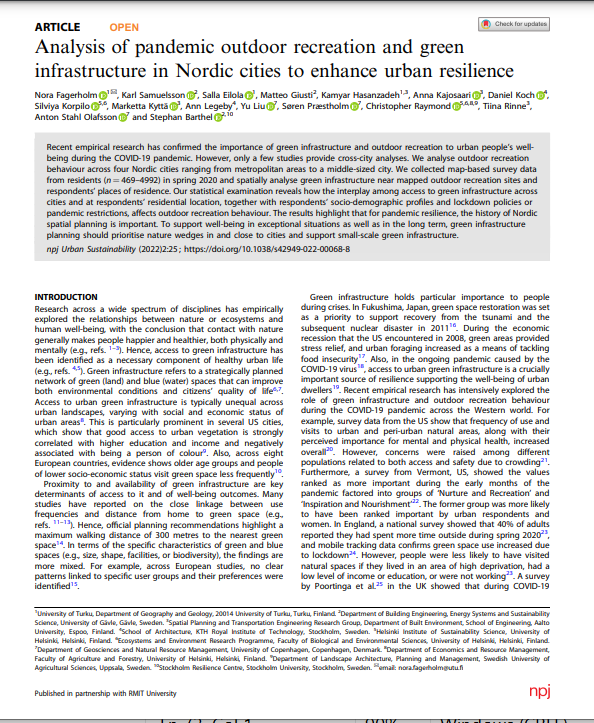
Analysis of pandemic outdoor recreation and green infrastructure in Nordic cities to enhance urban resilience
Recent empirical research has confirmed the importance of green infrastructure and outdoor recreation to urban people’s well-being during the COVID-19 pandemic. This study collected map-based survey data from residents in spring 2020 and spatially analyse green infrastructure near mapped outdoor recreation sites and respondents’ places of residence. The results highlight that for pandemic resilience, the history of Nordic spatial planning is important. To support well-being in exceptional situations as well as in the long term, green infrastructure planning should prioritise nature wedges in and close to cities and support small-scale green infrastructure.
Scientific article, October 2022
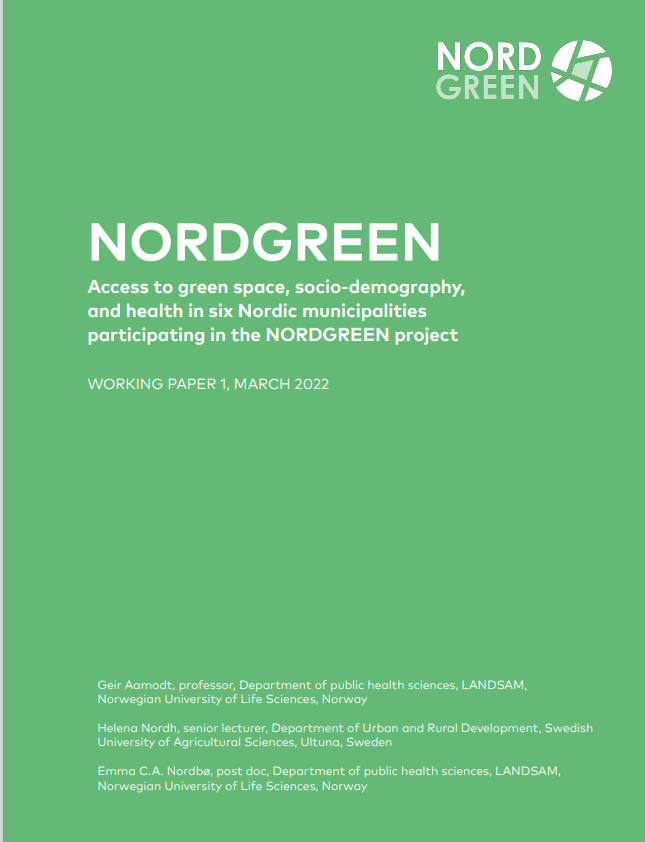
Access to green space, socio-demography, and health in six Nordic municipalities participating in the NORDGREEN project
Working paper 1, March 2022
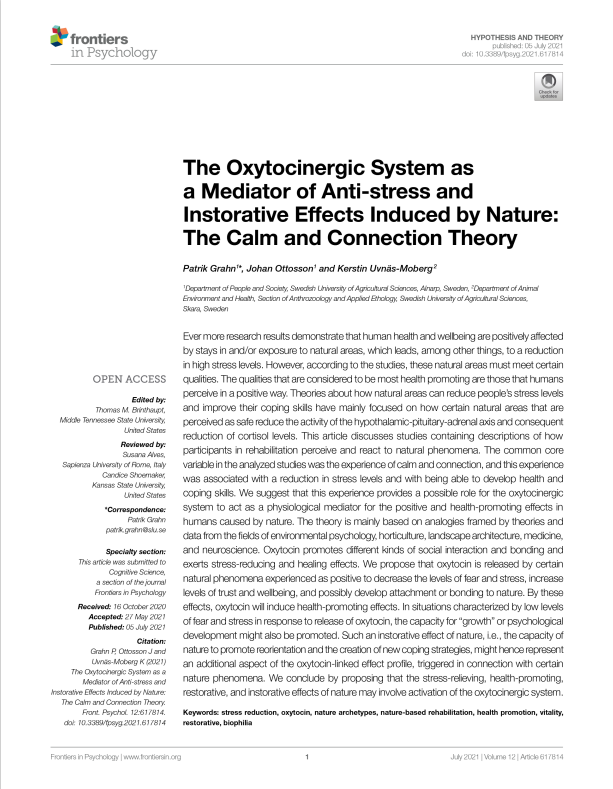
The Oxytocinergic System as a Mediator of Anti-stress and Instorative Effects Induced by Nature: The Calm and Connection Theory
Scientific article at Frontiers in Psychology, 5 July 2021
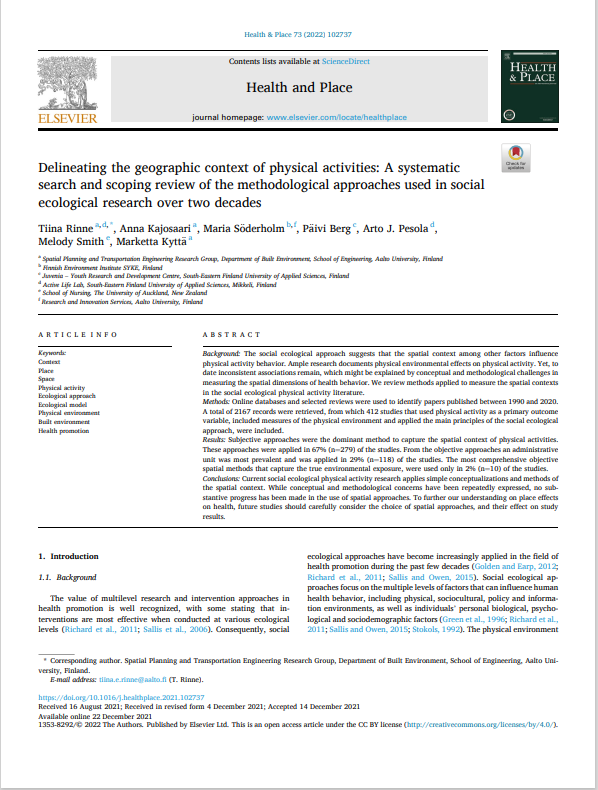
Delineating the geographic context of physical activities: A systematic search and scoping review of the methodological approaches used in social ecological research over two decades
Scientific article at Elsevier, Health & Place 73 2022
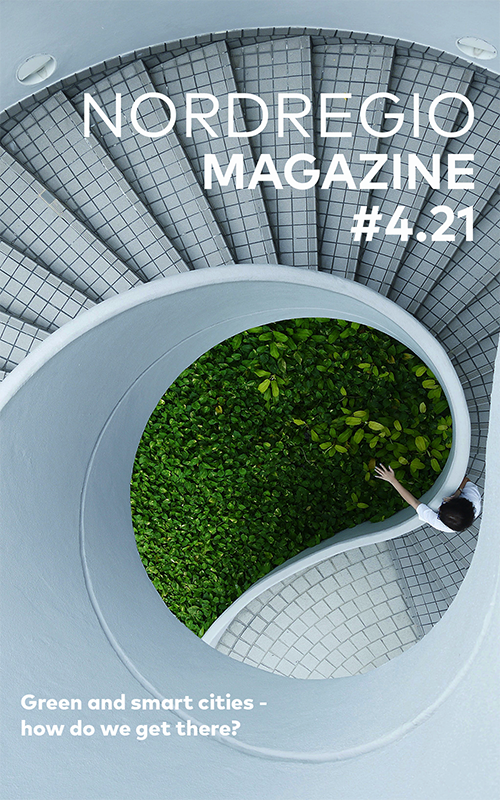
Smart and Green Cities - how do we get there
Nordregio Magazine 4 2021
The articles of the newest issue of Nordregio Magazine discuss how the participation of citizens can improve cities, how smart planning can improve the health of the residents and what are the sounds of a green city! This issue of Nordregio Magazine focuses on the work of NORDGREEN and SMARTer Greener Cities projects. Read the issue here
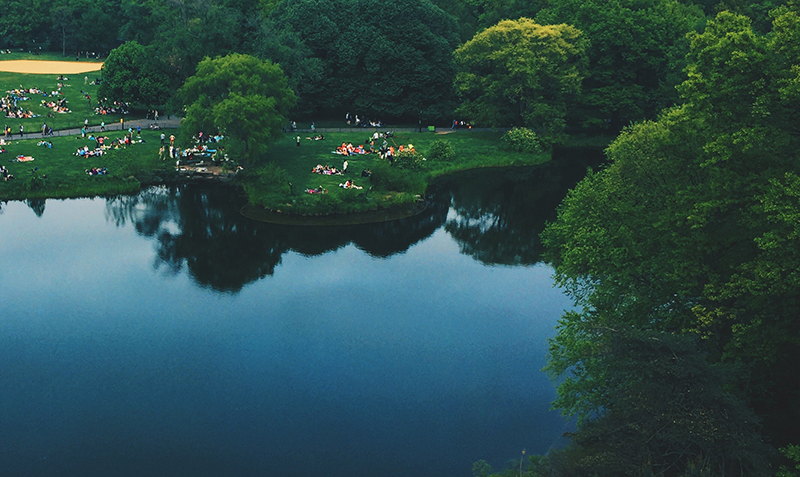
Scientific Article
The role of the state in preserving urban green infrastructure - National Urban Parks in Finland and Sweden
Research article, Published on 10 Aug 2021 in the Journal of Environmental Planning and Management.
Photo: Unsplash, Becky Phan. The article is available here.
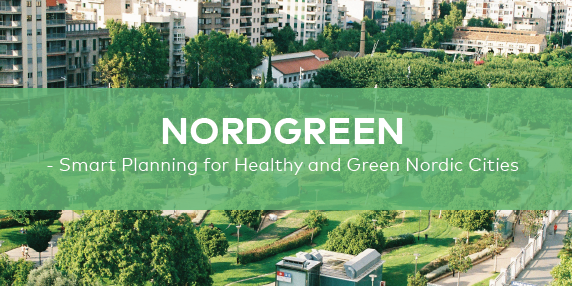
NORDGREEN brochure was published in October 2020. It is available here.
